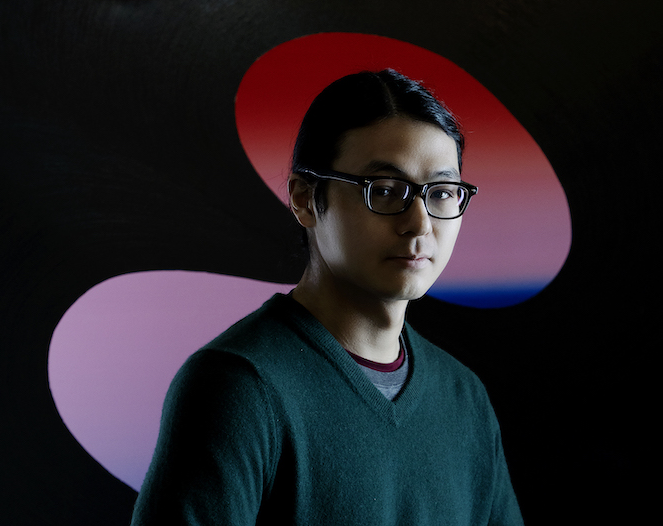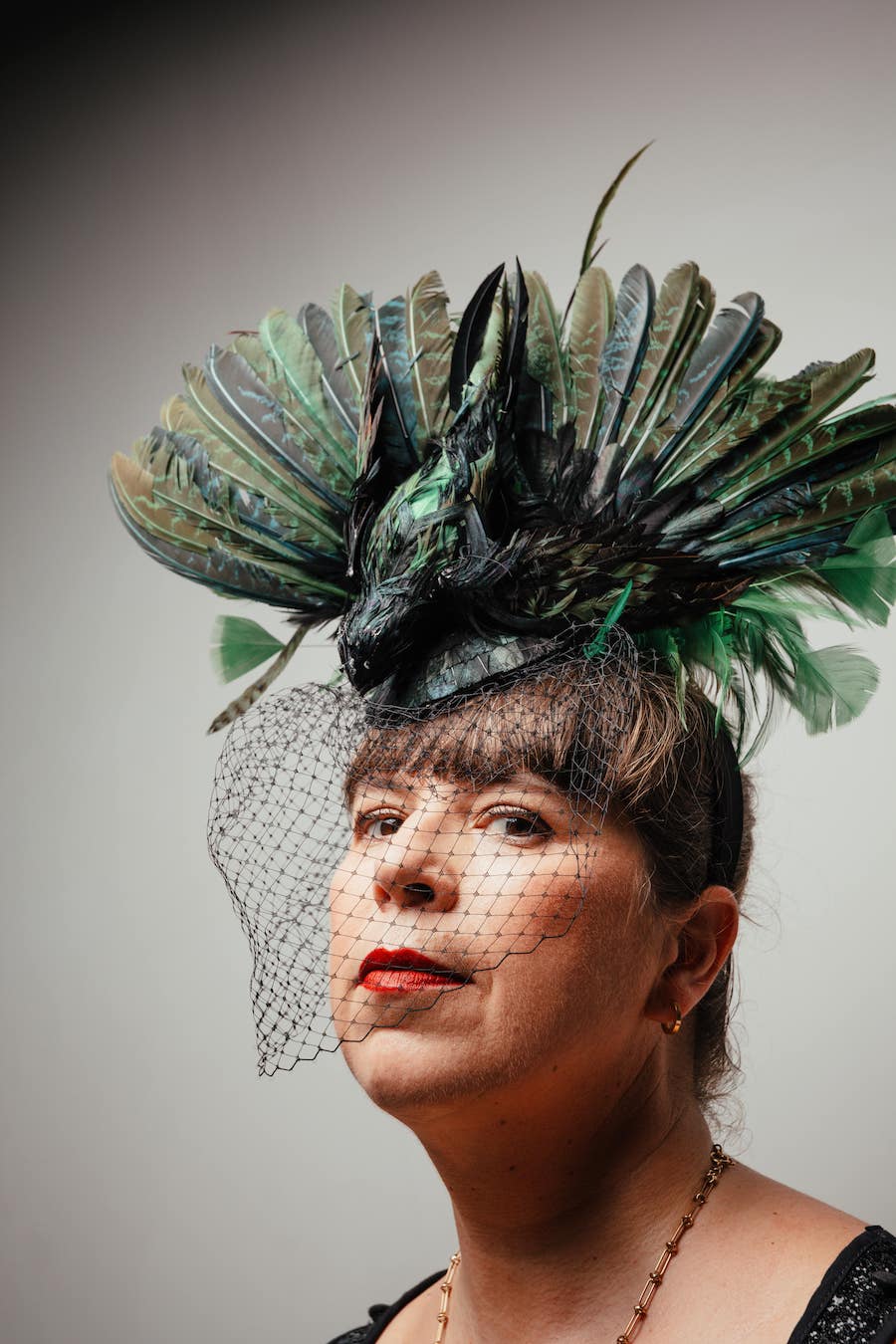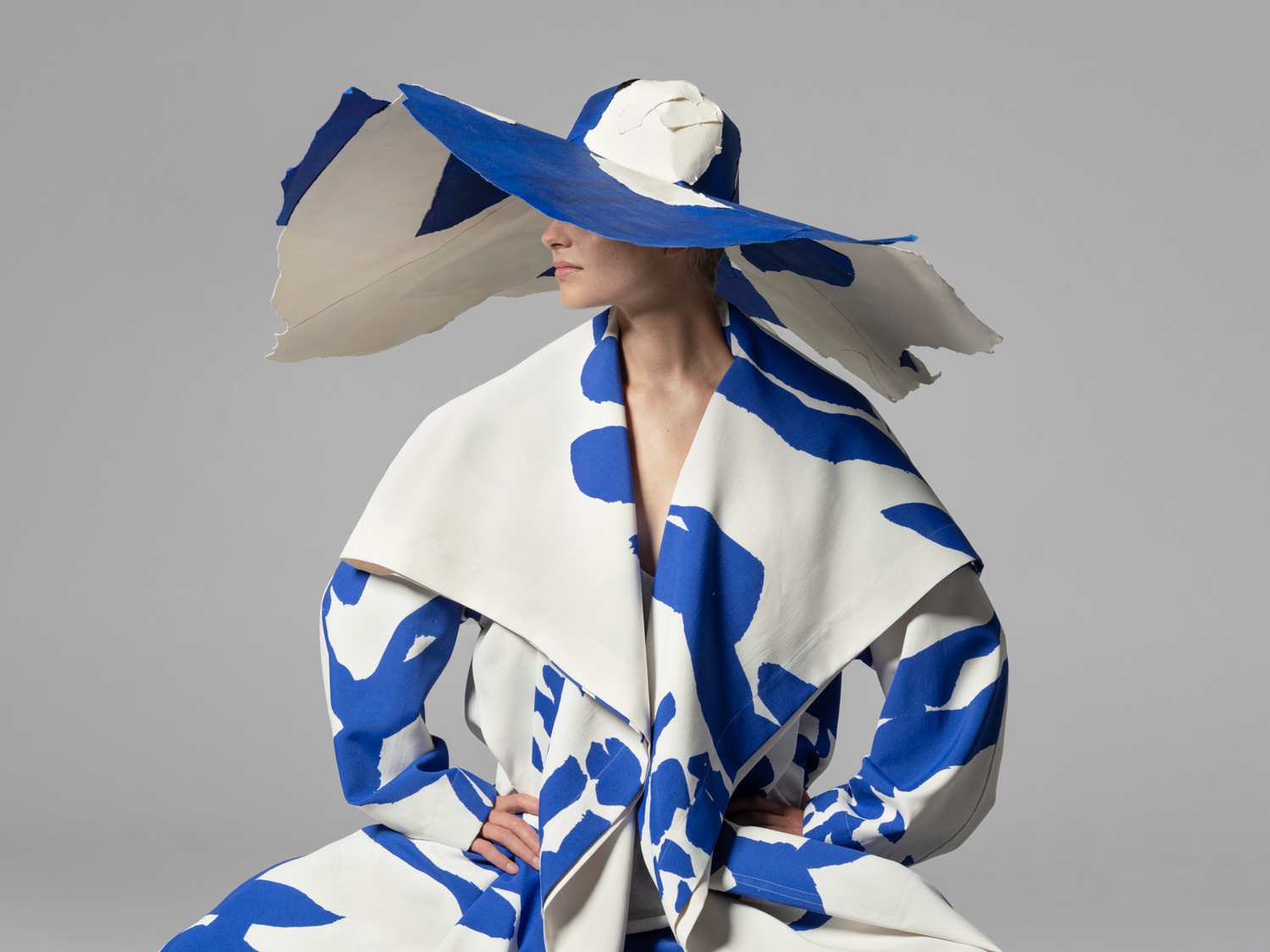Whitewall met the artist Carlito Dalceggio at MANA Contemporary in Jersey City. That’s where his current studio is—for now. The artist’s practice is nomadic, and over the past decade he has lived and worked in Bali, Mexico, New York, and Paris. His colorful work—whether it be paintings, murals, installation, sculpture, or video—blends folklore with the future. He’s created his own language of symbols and mythology, channeling the spirit in his work. Last May, he engaged local New York children in a public piece, Mythologia Libre. Whitewall spoke with Dalceggio about his travels, rituals, and manifesto.
WHITEWALL: You’ve described yourself as a nomadic visionary. When did your nomadic way of life begin?
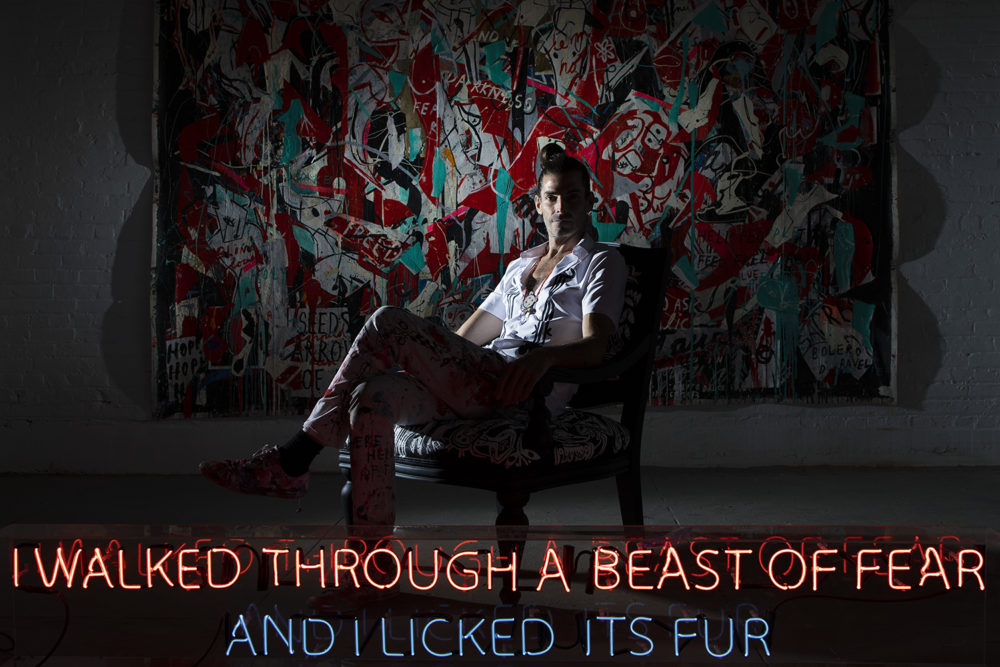
Carlito Dalceggio in his studio
Photo by Steve Benisty
CARLITO DALCEGGIO: I see my own life as a long vision quest. I’ve traveled to many different countries. My first big journey was in Mexico, where it came to me that I was an artist. And after that, I went on to build a studio somewhere, collaborate, exchange, and learn from a culture, and then create an exhibition.
I never really wanted to be attached to a style or way of thinking, because I think you have to abandon a part of yourself in order to evolve. So I kept myself in a place of discomfort, to not have too much comfort, so I don’t repeat myself and am always searching for new place and new language.
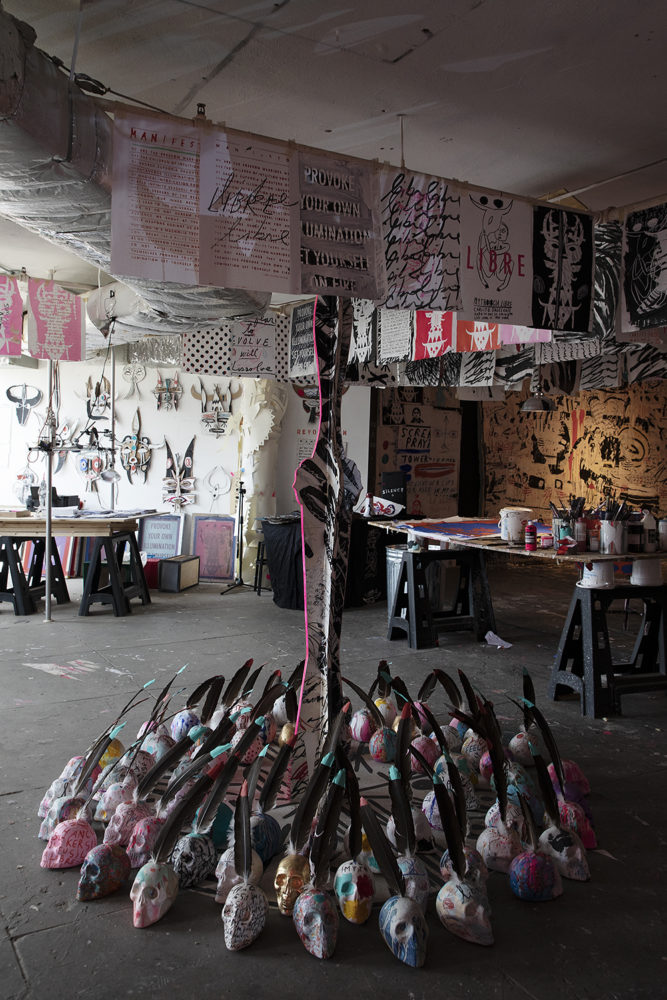
Photo by Steve Benisty
WW: Currently you are in New York, but you’ve lived in Bali, Mexico, and Paris in just the past decade. How have these different places influenced your practice?
CD: I call it “mystic surrealism” in Mexico. This part of the culture really influenced me. We all have our own routine, we all have rituals, but we are only unique when we lose control. I always have this desire to paint universal archetypes that will unify us. Going to India or Indonesia, Laos, and Thailand is to really learn about their mythology. I try to paint an essence of the universal, every culture’s own truth.
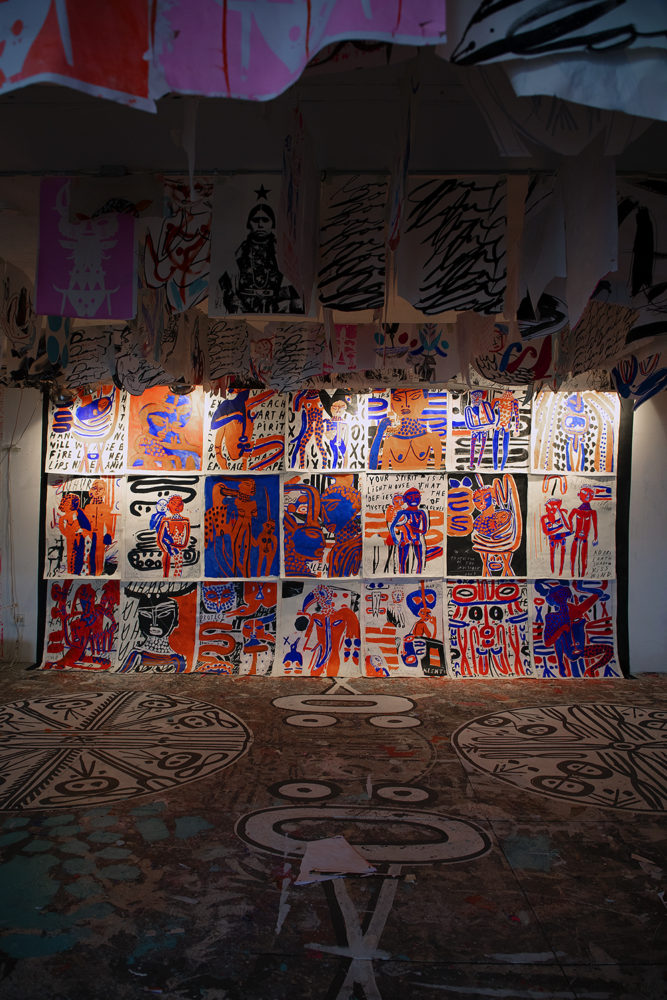
Photo by Steve Benisty
WW: What do you need from a studio space, no matter where you are?
CD: My studio needs to be a temple where the problems of the world do not penetrate. You leave your ego behind, you leave your problems, and you come there to perform a ritual. For me, to make art, you need to put yourself in some kind of a trance, to go to the unknown, and transmit these spirits to the world and give them shape. So the studio is very important—the music, the smells . . . the energy is very, very vibrant.
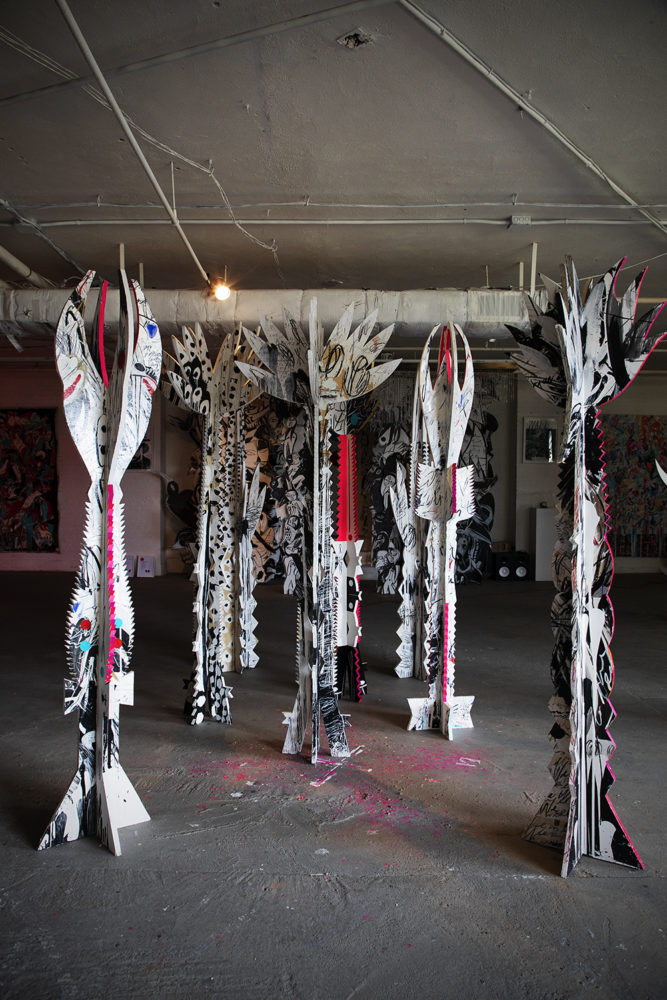
Photo by Steve Benisty
WW: How do you work within your studio?
CD: I don’t really work with assistants. I have collaborators, but most of the time I create art alone. I write poetry, I dive into paintings, I do drawings and animation.
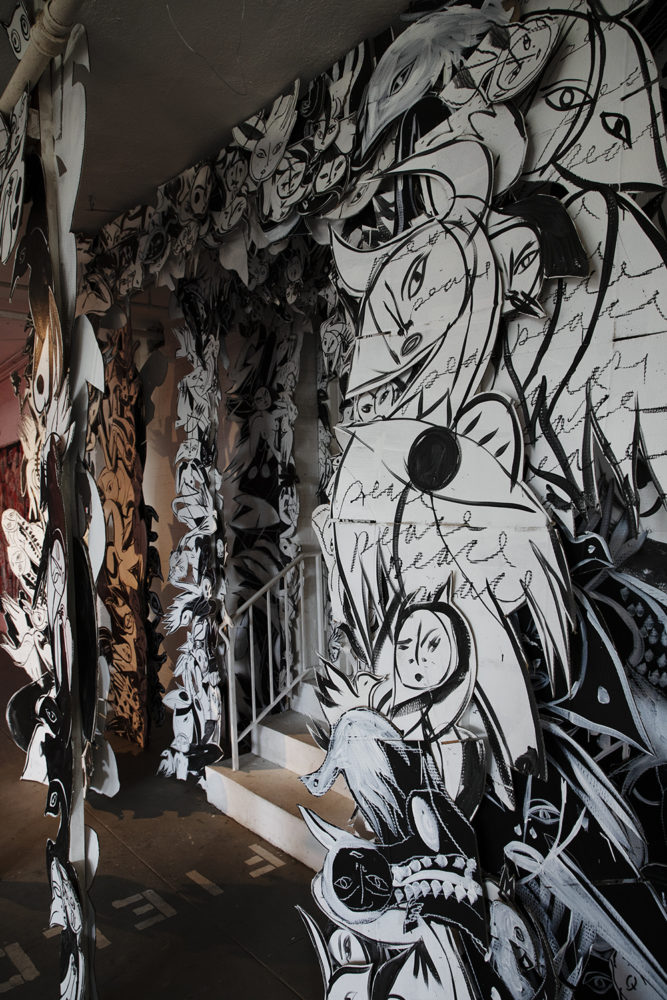
Photo by Steve Benisty
I see the artist as somebody who is going to this world of the unknown, of the spirit, so there’s always this kind of risking your soul. I call it “the magic triangle” that is the connection with the art, the head, and the soul.
WW: What do you enjoy about the performance of live painting?
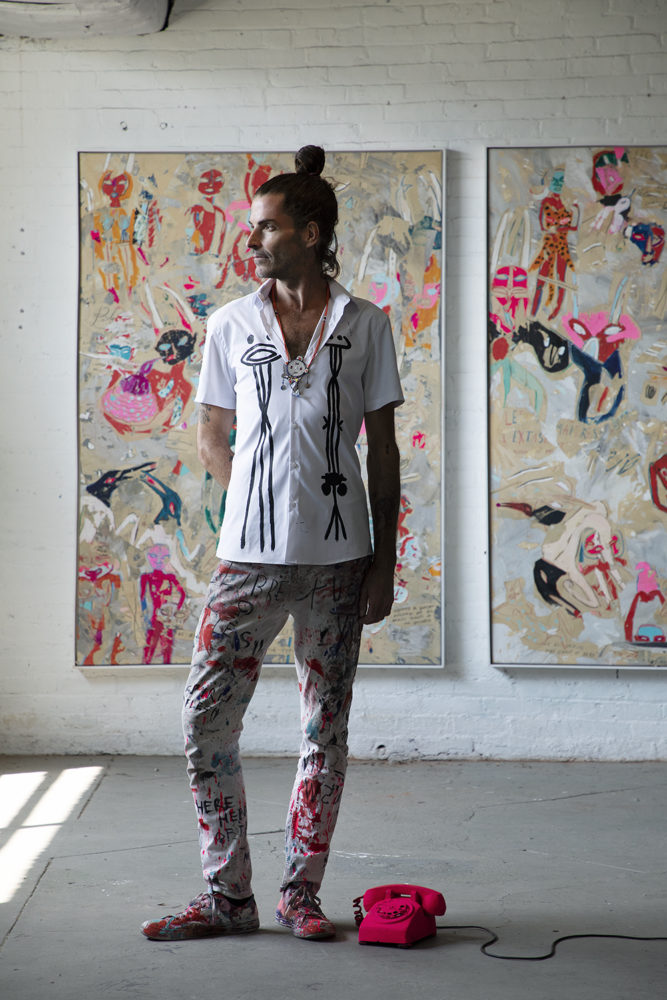
Carlito Dalceggio in his studio
Photo by Steve Benisty
CD: I started when some people would come to visit the studio. They saw me in the act of painting—I’m very energetic. They were like, “Wow, this is fascinating to see you paint.” So I started to perform these live paintings to share this magic ritual of creation. And it grew from there.
WW: Your recent public work in New York, Mythologia Libre, also involved the participation of children from the community. Can you tell us about that experience?
CD: Children are the greatest artists. They have no fear, they have their own world, and they are the future of our planet. So if we give them inspiration and provoke the imagination, then these are the seeds to plant for a better world, our future.
WW: Your work is quite spiritual—combining the ancient and a vision for the future. Can you tell us about how your personal spiritual journey informs your practice?
CD: I believe in a cosmic energy and a universal force that unifies all this together. My art is the manifesto for the liberation of the spirit. It’s deeply spiritual, but also erotic and very animal and very human at the same time. It is the primordial way of expressing myself. I never chose to be an artist—I was born with this mission, and I will never abandon this mission. Artists that are gifted by the universe need to get out of the studio, and out in the world to make it a better place. So to be socially involved with children, to do a social project—that is a vital mission of the artists.
WW: What role does sketching play in your practice?
CD: This is where the seeds are planted. This is where you don’t filter yourself and you don’t use your intellect. This is your almost instant, intuitive way to get down how you see the world. So I always have my black sketchbook with me.
WW: In your painting, we see recurrent motifs, like the hand, the circle. What are some symbols you return to in your work?
CD: There are characters that are current in my work and in my paintings. And they create a personal mythology. As people start to know them, you can read the paintings like a book. I have a thing called “the secret alphabet” that is a catalog of symbols that I started to draft 20 years ago. They all have a meaning—a recurrent set of symbols that go into the poems, the paintings, and the colors, that create a continuity.





